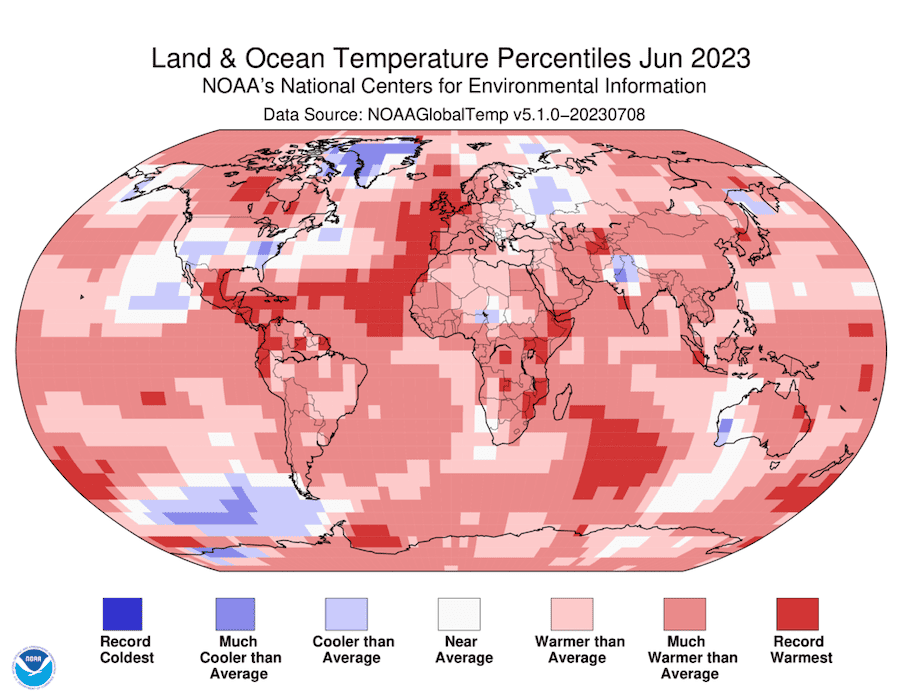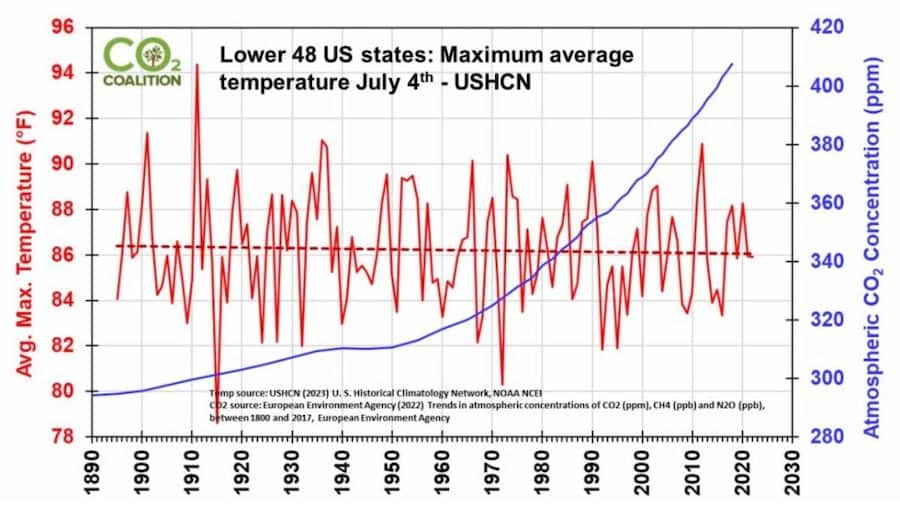by Tom Harris, America Outloud:

We’ve been told that human-caused climate change is going to destroy the world, and the media abounds with claims of unprecedented high temperatures. A recent article in the Washington Post tells us that July 4 was the hottest day on record since at least 1979, and that “some scientists believe July 4 may have been one of the hottest days on Earth in about 125,000 years, due to a dangerous combination of climate change causing global temperatures to soar, the return of the El Niño pattern and the start of summer in the Northern Hemisphere.”
TRUTH LIVES on at https://sgtreport.tv/

It certainly sounds like the Earth is in a dire state! The Green Party of Canada, responding to this announcement, wrote that “We have to act now, drastically reduce our greenhouse gas emissions today and preserve the lives of tomorrow and the day after tomorrow.”
But is such a devastating record truly based on facts?
The supposed temperature record was derived from a mix of satellite data and computer model estimates. A problem with comparing satellite data to temperatures from 125,000 years ago is, quite simply, that we do not have satellite data from that time. We rely on proxies such as ice core records and tree rings to determine the climate during that time period. This gives us a remarkable snapshot of the climate in times past, but certainly doesn’t possess the accuracy to say that we have set a temperature record over such a large time span.
Additionally, the National Oceanic and Atmospheric Administration (NOAA) has warned us that the computer model estimates used are not as dependable as traditional observational data. The data used, they tell us, is “not suitable to be used as a proxy for actual surface temperature and climate records.”
Moreover, yearly records are often set by less than the uncertainties in the measurements, which is simply dishonest scientific practice. The uncertainty tells us how much greater or smaller a measurement can be given the limitations of the data. For instance, if a temperature is recorded to be 20.6 ℃ with an error of 0.5 ℃, then we can only say that the temperature is somewhere between 20.1 ℃ and 21.1 ℃. If a record is supposedly set by 0.3 ℃, we can say right away that this makes no sense!
Additionally, temperature stations are often limited to populated areas, where the urban heat island effect takes place. Urban centers are typically hotter than the surrounding natural features due to the lack of cooling tree cover, asphalt that absorbs heat, and machinery such as air conditioners. 70% of the Earth is covered with oceans, and we have little data for these vast areas. Steve Milloy, a senior legal fellow at the Energy and Environment Legal Institute, writes that,
“It has been estimated that 96% of U.S. temperature stations produce corrupted data. About 92% of them reportedly have a margin of error of a full degree Celsius, or nearly 2 degrees Fahrenheit.”
Scientists at the CO2 Coalition have found that “both the number of weather stations reporting temperature over 100 degrees F and the Maximum Average Temperature for July 4th was slightly declining since the record began in 1895 – not increasing.” This can be seen in Figure 1 below, where the temperature trend is decreasing, even as carbon dioxide has been steadily increasing. This makes a clear case for the fact that our increased emissions of carbon dioxide are not causing temperatures to rise.
Figure 1: Decreasing temperature trend since 1890 in the lower 48 US states
Even given these facts, the entire concept of a global average temperature is misleading. Temperature is not something that can be meaningfully averaged to give an actual physical temperature. In their award-winning book, “Taken By Storm” (2007), Canadian researchers Christopher Essex and Ross McKitrick explain: “Temperature is not an amount of something [like height or weight]. It is a number that represents the condition of a physical system. In thermodynamics, it is known as an intensive quantity, in contrast to quantities like energy, which have an additive property, which we call extensive in thermodynamics.” There is no global average temperature as there is no meaningful way to weigh the different temperatures around the world and come up with an average temperature. And, even if we did calculate an average, it would be of no meaning to anyone on Earth: we all live in particular regions with particulate micro-climates. No one experiences a global average temperature.
Read More @ AmericaOutloud.news




